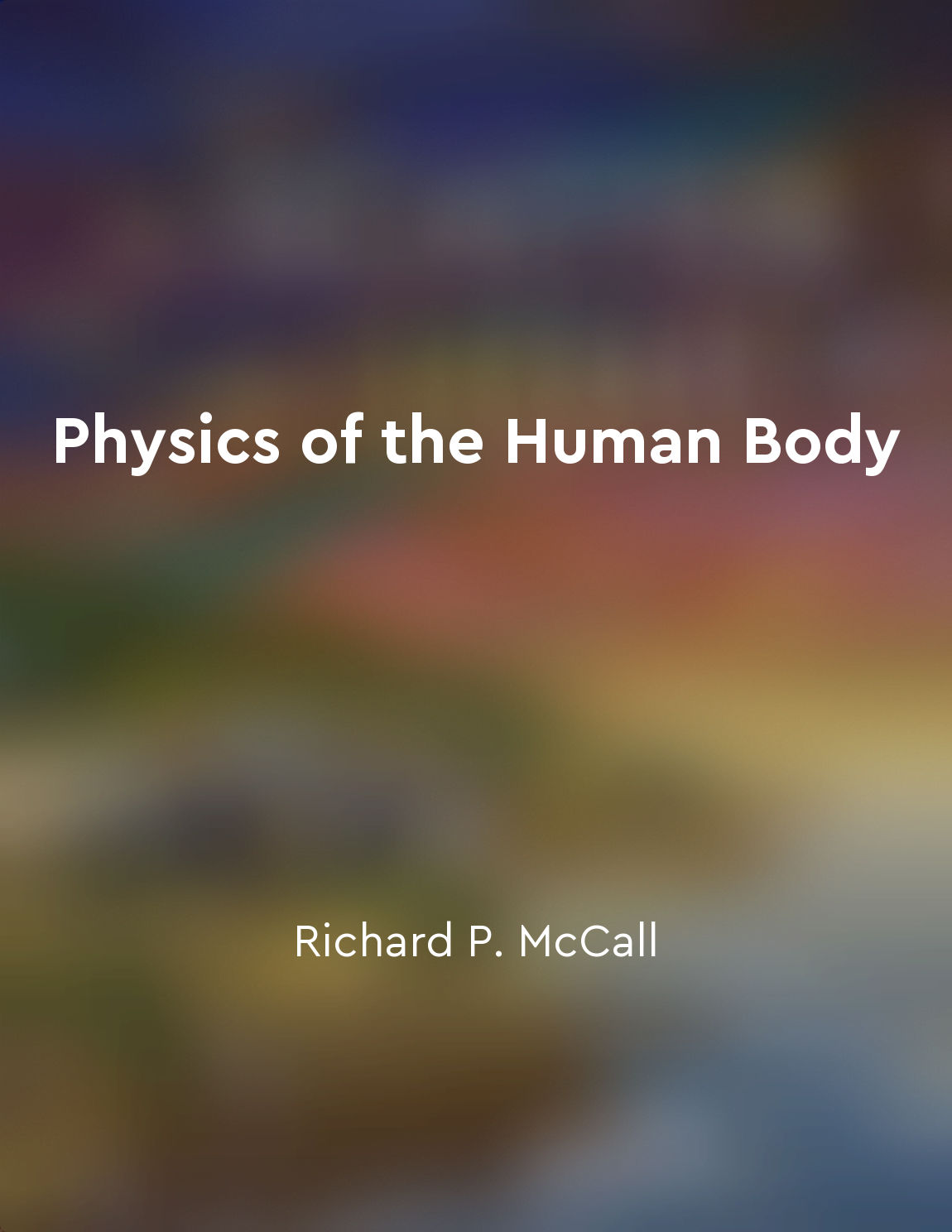Levers play a crucial role in body mechanics from "summary" of Physics of the Human Body by Richard P. McCall
Levers are essential components in the study of body mechanics. They are simple machines that can amplify forces and allow for efficient movement in the human body. By understanding the principles of levers, we can gain insights into how our bodies function and how we can optimize our movements for various activities. One of the key concepts of levers is the idea of a fulcrum, which acts as a pivot point around which the lever rotates. In the human body, joints often serve as fulcrums, allowing for movement in a controlled manner. For example, the elbow joint acts as a fulcrum when we lift a weight with our forearm muscles. By positioning the weight at a certain distance from the fulcrum, we can maximize the force exerted on the object. Another important aspect of levers is the concept of effort and resistance arms. The effort arm is the distance between the point where the input force is applied and the fulcrum, while the resistance arm is the distance between the fulcrum and the point where the output force is exerted. By adjusting the lengths of these arms, we can change the mechanical advantage of the lever and optimize our movements for efficiency. Different types of levers exist in the human body, each with its own unique characteristics. For example, a first-class lever has the fulcrum positioned between the effort and resistance arms, like a seesaw. This type of lever is often used in our bodies for tasks that require precision and control, such as lifting objects with our muscles. In contrast, a second-class lever has the resistance arm positioned between the fulcrum and the effort arm, like a wheelbarrow. This type of lever is more efficient for tasks that require a greater output force, such as lifting heavy objects off the ground. Understanding these different types of levers can help us analyze and improve our movements for various physical activities.- Levers are integral to the study of body mechanics and play a crucial role in how we move and interact with our environment. By applying the principles of levers to our understanding of the human body, we can enhance our performance in sports, exercise, and everyday tasks.
Similar Posts
Mental agility can enhance physical agility
The mind and body are not separate entities, but rather work in harmony to achieve optimal performance. Mental agility, the abi...
Don't skip warmup exercises
Warming up before you start your workout is crucial. It's not just a formality or a recommendation; it's a necessity. Skipping ...

The heart acts as a pump to circulate blood
The heart serves as a crucial organ in the human body, playing a vital role in the circulation of blood throughout the entire s...

